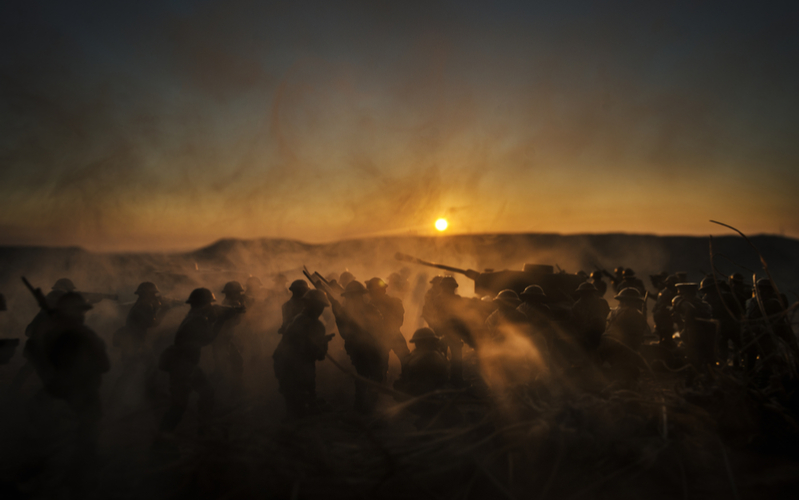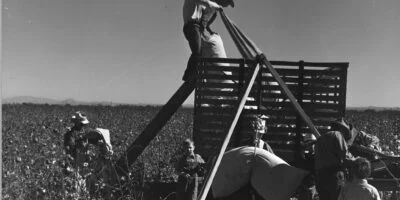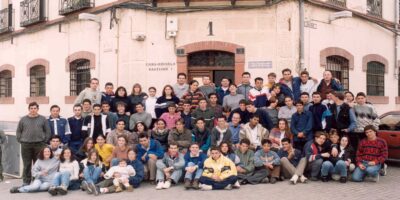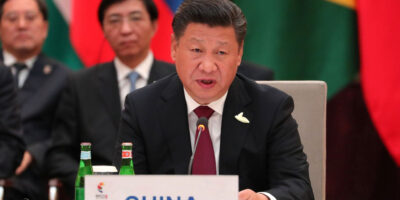Why Centrally Planned War Cannot Work
The practice of war might seem to have nothing to do with Hayekian knowledge problems and ways of dealing with them. In fact this is one of the best ways of understanding the biggest challenge military commanders face, the different ways soldiers have dealt with it, and why the U.S. military has a poor recent record.
The economics of war in general is a well-studied field. All military professionals know that in the modern world or even earlier, productive capacity and efficiency have been keys to victory, along with managing mundane factors such as supply chains and logistics. The huge productivity of the U.S. economy was the main reason why the Axis powers never stood a chance in World War II.
However, economic insights can help us to understand war at a deeper level. The key insights here are those of the value of knowledge, the cost of acquiring it, and most significantly, the knowledge problem identified by Hayek.
Organized Group Action
All human beings, alone or in groups, pursue goals through purposive action, which often has a forward-looking, or anticipatory, aspect. In this case, we can speak of plans. This is true for both individuals and groups. When acting as an organized group, people are engaged in a shared pursuit of some common goal; a company and a sports team are examples of this. An important proviso is that once the group goes over a very small number of people, a subset of the group or even just one individual will have to make decisions on behalf of the rest and then tell the others what they should do to realize the shared goal, given what the decision-maker decides.
What Hayek pointed out was that the decision-makers do this under conditions of radical ignorance because most of the information that could help them is not available to them. This is true in theory, not just in practice, because of the nature of human knowledge. Most of it is dispersed and fragmented among billions of people, and it is often tacit, meaning that it cannot be written down or expressed in words.
The well-known argument is that in conventional economic matters, free exchange generates prices and these in turn convey cues to people as to how they should act if they want to achieve certain goals, without their having to know in detail why they should be acting in that way.
Changes in prices also provide a feedback mechanism that enables people to evaluate the effects of the actions they take, and decide whether to change or reverse course or continue. This is why the idea of a centrally planned economy, with decisions about resource allocation and use being made by a small group, is a delusion.
What, though, of areas of life where prices do not exist or do not help? Hayek’s conclusion was that in those cases we should rely upon trial and error and tradition because the latter is a kind of collective memory of what has generally worked and had good results and what has not worked. This has obvious problems, however, and amounts to taking things on the chin and making the best of them.
War would seem a particularly acute case of this problem. Although prices would be useful in matters such as the supply and production of materiel, they have no application to actual combat. The conclusion for many is that war is the major area of human life where central planning is both needed and appropriate. Both reflection and experience show that this is not the case. In fact, applying the planning model to warfare has results almost as disastrous as in trade.
The Fog of War
Generals and military theoreticians have always been keenly aware of the knowledge problems faced by commanders. From Sun Tzu onward, they have emphasized the vital role of intelligence in warfare, of simply knowing more than the enemy and, crucially, of knowing as soon as possible what is going on on the battlefield or front. The trouble of course is that in actual combat this is very difficult — the expression “the fog of war” exists for a reason. It was captured by Carl von Clausewitz in the following remark:
War is the realm of uncertainty; three quarters of the factors on which action in war is based are wrapped in a fog of greater or lesser uncertainty. A sensitive and discriminating judgment is called for; a skilled intelligence to scent out the truth.
Unfortunately, the way battles and campaigns are often represented in historical accounts makes them seem like masterpieces of central planning, conducted by all-knowing and all-seeing generals and admirals. Maps with arrows marking the movements of armies, ships, and units make the whole process appear orderly and controlled. Everyone with military experience knows this is nonsense.
As Clausewitz says, commanders at all levels but particularly the highest ones have little idea of what is actually going on. The knowledge they need is spread out among all of the combatant soldiers on both sides, as well as (even more importantly in many situations) among civilian bystanders. Not only that, the situation is constantly changing rapidly, and often in unpredictable ways.
This means that detailed, large-scale plans that try to manage the micro level of combat are useless, if not a positive hindrance. This was captured in the well-known remark by one of the greatest of military planners, Helmut von Moltke the Elder: “No battle plan survives contact with the enemy.” For the average lower-rank combatant, the experience of combat is one of chaos, confusion, and mayhem. The task of the officer and particularly commanders or staff officers is to make effective decisions in the face of this chaos — at least ones that are more effective than those made by the enemy. (Effective in this context means actions that lead to an outcome as close to the hoped-for or intended one as possible.)
Generations of Warfare
In the modern world, we can observe three broad approaches to this challenge. These have been theorized by the American theoretician William S. Lind as second-, third-, and fourth-generation warfare. The analysis is perceptive, but the use of the term “generation” is misleading as it implies a chronological sequence when in fact all three can exist and have existed at the same time. It makes more sense to think of them as different approaches to the knowledge problem, which is central to warfare, certainly in the modern world.
In the premodern world, this challenge was simultaneously more intractable and less acute because of technological limitations and the scale of warfare: when a battle literally took place on a field and could be observed by a commander on horseback, the tactical knowledge problem was much less while the strategic problem of finding out what was going on a hundred miles away was much worse.
First-generation warfare in Lind’s terminology was the approach developed in the very early part of modernity, from the mid-seventeenth to the early nineteenth century.
One solution is the martial equivalent of a planned economy. This is “second-generation warfare.” In this, a supreme central command (typically a general staff) draws up not only targets and goals but also detailed and prescriptive plans for every phase and level of the actual operation to achieve those goals. Lower-ranking decision-makers have little or no discretion and must abide by the requirements of the plan produced at the center.
This way of organizing warfare was perfected by French thinkers at Saint Cyr but was widely adopted. In particular, it has become the dominant theory of war in the United States since at least World War I (some would argue since Ulysses S. Grant). A distinctive American wrinkle on second-generation warfare is to see this as analogous to the kind of planning that took place in large corporations from the 1930s onward, with the army or navy seen as a military equivalent of General Motors.
This way of organizing war has grave shortcomings that reflect the way it simply ignores the intractability of the knowledge problems facing commanders and officers. It is wasteful both of resources and lives and has great difficulty in dealing with the sudden unexpected happenings that are such a prominent part of actual warfare as opposed to war-games. The response is to swamp the uncertainty and confusion and deal with the inflexibility of the command and decision structure by relying upon overwhelming firepower and superiority in materiel.
If you can dump 10 times more explosives into the combat zone than your opponent, it doesn’t really matter if more than half of that firepower is wasted and misdirected. This also explains why the U.S. military is particularly attached to this, given the huge productive and technological superiority of the U.S. compared to its historical opponents.
Type Three
The main alternative is what Lind calls “third-generation warfare.” It is probably better known as “maneuver warfare.” This was supposedly developed as a practice by the German army during World War I, but there had been intimations of it before then, not least in the practice and doctrine of the aforementioned Helmut von Moltke.
Here the central staff still draw up ultimate plans and specific targets. However, the operational decisions are not prescribed. Instead they are delegated to company or even platoon level and made by lower-ranked officers. This style of warfare is much more effective, as shown by the performance of the German military in both world wars despite its huge inferiority in resources.
The reason is that lower-ranking officers and noncommissioned officers have much more direct access to the information and are the best judge of what they need to do in their own local situation to realize the overall goal set by the planning officers. Moreover, another feature is that junior officers are encouraged to pass on their decisions and information up the chain of command as rapidly as possible (in contrast to centrally planned warfare, where this would not help the officers’ prospects, to put it mildly) so that there is a better feedback system that enables the higher commanders to adjust what they are doing.
Type Four
The most radical response is what Lind calls “fourth-generation warfare,” which means guerrilla warfare and organized violence carried on by non-state actors, often without a formal hierarchy. In one of the great ironies of history, the premier theoretician of this kind of warfare is Mao. Here there are only vague general goals, and the decisions on how to go about pursuing them are in the hands of local cells and cadres. This allows for experimentation and innovation, which can then be copied elsewhere if successful. The guerrillas make use of not only their own direct local knowledge but the dispersed knowledge of the local civilian population (the sea in which they swim, in Mao’s expression).
Since at least the Boer War, this has proved the most effective method of warfare, in terms of maximizing the impact of personnel and resources. Suppressing it has proved hugely difficult for militaries wedded to second-generation methods (as with the British in South Africa and the Americans in Vietnam), and when they have “won” they have done so at inordinate cost.
On the other hand, America’s greatest military theorist, the late John Boyd, argued that the key to success in combat is to constantly adjust and to embrace disorder: in particular, he thought commanders should look to introduce chaos and randomness so as to disrupt the decision-making process of their opponents (the famous OODA loop).
All organized activities face challenges posed by knowledge problems, and warfare is no exception. As in other areas of life, decentralized decision-making and rapid feedback mechanisms can mitigate those problems even when the price mechanism is not available (in fact this is the majority of life as price mechanisms are only possible when there is voluntary exchange).
Central planning applied to warfare can mobilize huge resources to swamp resistance, but the cost of this in every sense is very high. Moreover, the evidence of the last few decades is that even by that low standard, central planning applied to warfare does not work when it has to compete with other methods. Since those other methods can, in the wrong hands, also do huge damage, it’s an urgent project to work out how to change the way we approach warfare – or pursue the best possible route of eschewing war completely.











